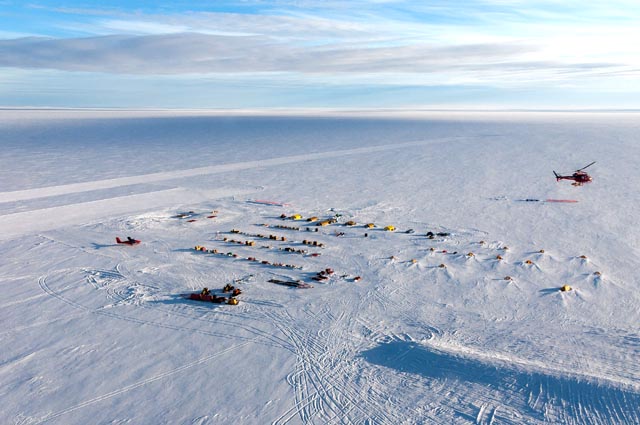|
Below the surfaceNew paper reveals ocean-ice dynamics below PIG ice shelfPosted September 13, 2013
Scientists have revealed for the first time the dynamics that are causing an ice shelf in West Antarctica to melt from underneath. The results were published this month in the journal Science less than a year after a team of researchers successfully deployed instruments through the ice and into the ocean cavity below. Pine Island Glacier (PIG) is one of the largest and fastest flowing rivers of ice in Antarctica, with the potential to raise sea level. It flows into a relatively small ice shelf, which acts as a sort of cork to staunch the flow of ice. Scientists have observed in recent decades that the glacier was moving ever faster, as the ice shelf thinned. Now scientists are starting to get a better understanding of why the ice shelf is thinning. Press releases
They have determined that as warm sea water flows along the ocean floor toward the grounding line, where the massive glacier and land meet, the resulting boundary layer current heads back out to sea along the underbelly of the glacier, carving a series of melt channels along the way. “Fresh water forms every time [the sea] injects heat into the shelf,” explained Tim Stanton “The warm water starts to melt the ice at the grounding line and creates a plume called a boundary layer current,” said Stanton, lead author on the paper. “We measured the effects of that current for the first time.” During the 2012-13 summer field season in Antarctica — after years of planning, missed opportunities and uncooperative weather — the team was able to deploy one-of-a-kind sensors and profilers designed and built by Stanton through the 450-meter-thick ice shelf. Other field work involved in the Pine Island Glacier project, dubbed PIG, included seismic and radar mapping of the region by scientists from Penn State The National Science Foundation Previous coverage — Antarctica's ground zero:Expedition heads to Pine Island Glacier region to study thinning ice shelf. |



For USAP Participants |
For The Public |
For Researchers and EducatorsContact UsU.S. National Science FoundationOffice of Polar Programs Geosciences Directorate 2415 Eisenhower Avenue, Suite W7100 Alexandria, VA 22314 Sign up for the NSF Office of Polar Programs newsletter and events. Feedback Form |


